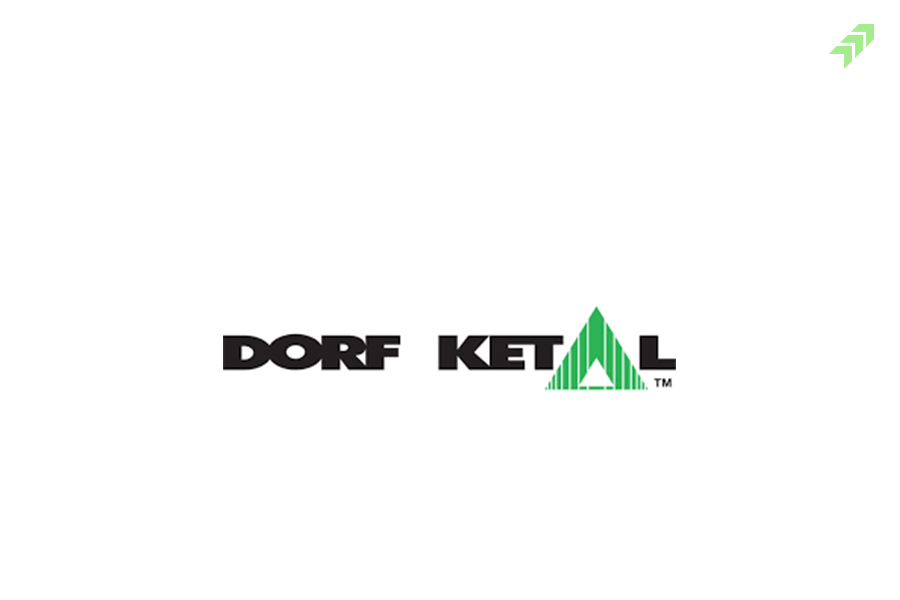Swimming in the water against the wave will not make difficult for you to swim across successfully, but there is a risk of drowning if the stream of water is high and you are not able to swim. Similar rules are also applicable when you trade in the stock market.
Yes, if you are playing against the market trend in the stock market, then it would be not only difficult to make the profit but you might also incur a loss if you are playing intraday trading. However, for long-term investment, you can choose any stock anytime buy at the current levels and wait for years to get a return. You can pick such stocks even against the trend because minor ups and downs don't matter for the stock bought for long-term investments.
Also Read: How to Do Intraday Trading: Best Stocks, Charts & Strategies
For intraday trading, you have to plan your trading strategy as per the market trend. If your decision is not right while selecting the stock according to the trend your trading strategy will fail making your trading journey unprofitable. Hence, we are going to discuss here about trends, their types and mainly how to identify the trend in the stock market.
Also Read: How to Select Stocks for Intraday: 10 Tips to Pick Best Stocks
Understanding the Trend in the Market
A trend in the stock market means the direction of the market index or individual stocks heading towards a particular direction. The stock markets usually do not move in a straight line direction and can be volatile for a day a few trading sessions or for a few days.
And amid such zigzags, you need to find out the market trend, whether it heading towards or in which direction. And to understand the trend you need to perform the trend analysis that will help to find out the trend. Trend analysis is the process of analyzing the market movement using chart patterns like candlesticks chart patterns and trend lines.
The best way to find the trend use the technical indicators and various tools and techniques in technical analysis. This will not only help you to identify the trend in the market index or individual stock but also show you the right levels to buy and sell the stocks. Before we discuss about how to identify the trend let's have some light on different types of trends.
Types of Trend in the Stock Market
Usually, there are three types of trends in the market – upwards, downwards and sideways or range-bound trend. Let’s know more about these trends.
Upward Trend: When the price of a stock or market index keeps moving in the upward direction or keeps rising then it is called an upward trend or bullish market. Though, the index can come down during the trading session but moves with higher highs and higher lows and when seen on long days or many trading sessions it will be evident as an upward trend.
Downward Trend: The downtrend is identifiable when the value or price of the stock is falling with lower lows creating the opportunity for the traders to create the short position. And when most of the stocks every day are falling instead of going up or you can say the advance-decline ratio is declining consistently means the market is in a downtrend direction.
Sideways or Range bound Trend: When the stock or index moves neither upwards nor downwards with low volatility in the market, then it is called a sideways trend. In a sideways trend, the stock trade in the range and the general accumulations and distributions takes place during most of the trading session which is also because of low volume. And when the demand and supply forces work equally then this kind of trading range is visible in the market.
How to Find Trends in the Stock Market?
Identifying these trends is very important to trade with the right trading strategy. If you do not trade according to the trend of the market or individual stocks, you can incur a loss or might not get the returns as per the expectations. And to identify the trend in the stock market or individual stocks you can use various tools, techniques and technical indicators.
Also Read: Top 5 Best Technical Indicators for Intraday or Day Trading
However, the purpose of identifying the trend should be defined as per your investment time horizon. The trends are categories on the basis of these time horizons and while finding the trend in the market, you have to keep in mind these points.
Top 10 Indications to Know the Trend
-
Drawing the Trend Line
This is one of the simplest and easiest ways to know the trend in the market or stocks. You can see if the price of the stock market index is drawn on the line chart. If you are checking the price on the candlestick chart you can draw the trend line on the chart that will tell you where the market is heading in the downwards direction or the upwards.
If the trend line is showing upward means there is an upward trend in the market, while when the trend line is heading downward direction, means the market is in a downward direction or you can there is a bearish trend. When there is no significant movement either upwards or downwards, it is called a sideways trend.
-
Candlestick Charts Patterns
The best way to find the trend in the stock market or any individual stock is to see the patterns of the candlestick charts. If you can see the green candles making the formation with higher highs on every trading session for many few days, weeks, or months. This kind of candlestick chart pattern clearly shows there is a bullish trend in the market.
Also Read: How to Read, Analyse & Use Candlestick Chart Patterns for Trading
The formation of candlestick charts also matters to identify the trend in the market. The type of candlestick charts and various parameters give the right signal to identify the trend in the market. Similarly, there are other parameters that are also considered while using the candlestick chart patterns to find the trend in the market.
-
Advance Decline Ratio
This is one of the most simple and easiest ways to find the short-term trend in the market. Yes if you can see that the advance-decline ratio of stock is much higher in the market for many days then it can be considered as an upward trend in the market.
If the advance-decline ratio is much lower, then it means there is a downward trend as most of the stocks fall compared to stocks rising. Though it is not a reliable or long-lasting indication to find out the trend in the short term for intraday trading you can use the advance-decline ratio to find out the trend in the market only but not in the stocks.
Also Read: 7 Biggest Mistakes To Avoid While Doing Intraday Trading
-
Average Daily Volume
Volume individually cannot give you the right indication to decide about the market trend. But when you see the stock price of the market index is consistently moving in the upward direction with high volume means the market is in a bullish trend.
Also Read: Importance of Volume in Technical Analysis: Use & Role in Trading
Similarly, when the market or individual stock is consistently falling with the increase in the average daily volume, it means the market is in a bearish trend. When there is no volume in the market, volatility comes down and the market moves in a sideways direction.
-
Use the RSI Indicator
This is one of the best tools or you can say the technical indicator to identify the trend in the market. RSI or Relative Strength Index helps to identify the momentum in the stock with the signal to know whether the stock or market is in the overbought or oversold zone.
Also Read: What is RSI in Trading & How RSI Works? Formula and Strategy
RSI is taken as 14 day period that keeps fluctuating between zero to 100 and when moves below 30 it means the market or stock is trading in an oversold zone and when goes above 70 it indicates overbought giving the signal to buy or sell as per the trend.
-
Use the MACD Indicator
The moving averages are another indicator of the trend in the market that shows the average price of a security or market index over a particular timeframe. MACD or Moving Average Convergence Divergence is the trend indicator that consists of the MACD and signal line crossover gives the signal to buy and sell the individual stock or market index.
Also Read: How To Use Best Moving Averages for Intraday or Day Trading
When the MACD line crosses above the signal line it means stock is in uptrend and gives the buy signal. When the MACD line crosses below the signal line, it is considered the downtrend and gives the signal to sell the stock or underlying index.
Also Read: How to Use Moving Averages in Trading & Convergence Divergence
-
Open Interest in F&O
In derivatives markets, the stocks traded in the future and options can be used to find the trend using the open interest that is created in the options or future contracts. As per the market trend, the open interest increases and decreases in the stocks.
Also Read: Nifty Open Interest: How Traders Use Change in Nifty OI for Data Analysis
When a stock or underlying index rises with the open interest rise, it indicates a bullish trend. On the other hand, when index or stock prices decrease with the increases in the open interest it means the stock is likely to fall means it is in a downward trend.
-
The ADX Indicator
Traders use the Average Directional Index or ADX momentum to identify and analyse the trend in the stock or underlying index. The ADX helps to know the strength of stock price or market index in both directions whether it is negative or positive.
The ADX value keeps changes between zero and 100 and the indicator displays the value from 25 to 100 indicating a weak trend when falls below 25 and a strong trend when moves above 100 helping the traders to create trading strategies as per the trend.
-
Super Trend
A super trend is a trend indicator that indicates the direction of the price movement in the trending market. When the super-trend is plotted above or below the closing price the indicator changes color as per the change in the direction of the trend.
Whereas, if the super trend indicator moves below the closing price the indicator becomes green and gives the signal to buy. While, when the super-trend closes above, it means the indicator is giving the signal to sell or the trend in a downtrend.
-
On-balance Volume
The On-Balance indicator is another trend indicator that is also called the volume indicator. The on-balance Volume can be calculated with cumulative buying and selling pressure when the volume is added on “up” days and subtracting the volume on “down” days.
The volume is the main indicator to confirm the trend, as the increase in the price should be accompanied by an increase in the on-balance volume and the decrease in the price should be accompanied by the fall in the On-balance Volume.
Trends in Different Timeframes
The trend analysis is classified as per the different time frames like short-term trend, medium-trend and long-term trend. The timeframe for a short-term trend is usually considered for less than one month, a medium-term trend occurs between one to three months, while a long-term trend is considered over the timeframe of longer than one year.
The trend in the different timeframes can be different and can co-exist in the different timeframes. Sometimes in the short-term market is down trended, while in the medium-term it could be sideways and can be uptrend in the long-term timeframe. And when all the trends in different timeframes are the same it can be considered a strong signal to initiate the trade.
Wrapping-up
To spot the trend in the stock market you can use various tools and techniques that are used in the technical analysis. The stock market keeps moving mainly between the three trends downtrend, upward trend and sideways trend in different timeframes.
Also Read: Is Technical Analysis Useful or Useless or Enough for Trading
Traders use short-term trend analysis to create their trading strategies for day trading or create short-term positions in stocks with the combination of technical analysis. For long-term investment, investors use the long-term terms timeframe trend with fundamental analysis depending on the different market conditions.
Also Read: Why is Fundamental Analysis Important for Investing in Stocks
And to understand the trends better you should take the help of market experts who have better knowledge and experience in analyzing the market using the right tools and techniques. The right analysis of trends can help you to know the right trend in the market or individual stock according to that you can create your buying and selling position.
Moneysukh offers one of the best trading platforms to trade in the stocks, commodities and forex market as per the trend in the market. Along with one of the leading broking companies, it is a discount broker in India offering an online trading platform for all types of investors or traders to use the stock market application for trading and investing.
Also Read: What to Know Before Investing in Stocks: 10 Things to Consider
Apart from discount broking services, Moneysukh also provides online trading software for Algo-trading with the best Algo-trading strategies for investors to choose the right trading strategy as per the market trend. Using Moneysukh’s trading app you can invest or trade in equities, commodity markets or currency markets at the cheapest brokerage fees.
Also Read: What are the Most Popular & Profitable Algo Trading Strategies
Hence,to start trading or investing as per the market trend, just apply here to open the trading account and demat account. Along with trading, a demat account and the best trading app for beginners, you will also get recommendations and tips to buy or sell stocks or create trading positions in the F&O market with the best options strategies. A team of analysts and market experts are working here to help clients make some extra money from the stock market.
Also Read: How to Start Algo Trading in Moneysukh: A Best Algo Trading Platform


















No comment yet, add your voice below!